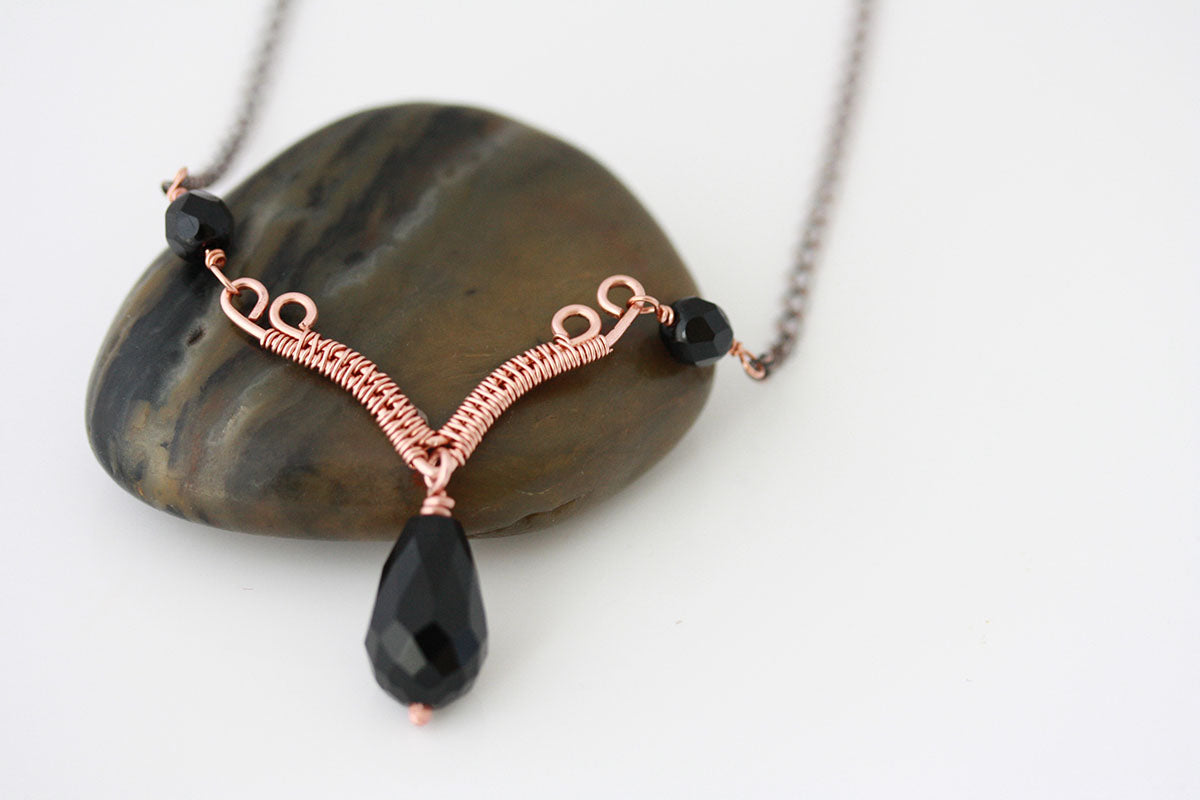
How to start wire wrapping jewelry
HOW TO START WIRE WRAPPING
Wire wrapping is a fun and easy way to start learning how to make jewelry. However, it can be intimidating when you first start because there are so many things to learn! It can become overwhelming. So Let’s start learning a little bit about the basics of wire wrapping.
Learning how to wire wrap a pendant or earrings for examples requires a few tools, and you can start with the bare minimum at first. I am going to list a few tools that you will need to get started. These tools, you can find at your local craft store or you can buy them online.

For the bare minimum, you will need the following tools: Some wire cutters, a pair of round nose cutters, a pair of flat nose pliers and a metal file that you can get at any hardware store. You can start with these tools, and buy more later as you learn more and get more comfortable working with wire.
Next, we have the wire. There are many types of wires that you can use for wire wrapping. I like copper wire because it’s readily available and inexpensive. You can find copper wire at any hardware store, craft stores or online. It’s great for practice because it’s very affordable. The two most important things that you need to know about wire is the wire gauge and the wire Temper. Wire gauge refers to the size of the wire and temper refers to the hardness of the wire.
Wire gauge
As mentioned above, a wire gauge is about the size, or the thickness of the wire. What you need to remember is that the higher the number, the thinner the wire. So a wire gauge of 26 is smaller in thickness that a wire gauge of 20. The wire gauge chart below from Rio Grande, shows the sizes of wire in inches and centimeters. When wire wrapping jewelry, I like using 28 gauge or 30 gauge wire for wrapping pieces together. These gauges are really thin and perfect for wrapping. On the other hand, If I am wire wrapping a pendant, I may use something between 20 and 16 gauge for the frame of the pendant, depending on the look I am going for.
Wire Temper
Wire temper is about the hardness of the wire. The tempers that are commonly found are soft, half hard and hard. There are other tempers in between those, but we will focus on these three for now.
Soft Wire: As the name suggests, this type is wire is really soft and malleable and very easy to work with. This type of wire is very useful in application where your are going to manipulate your wire a lot. Wire gets harder and harder the more you manipulate it, and excessive manipulation will render the wire extremely hard and brittle. If you take a piece of wire and keep bending back and forth, it will turn hard and break eventually. That’s why it’s better to start with some wire if it’s going to be manipulated a lot. If you’re making a design with a lot of swirls and spirals for instance, soft wire will be perfect for that.
Half hard wire: This type of wire is a little bit harder than soft wire, so it’s slightly springy and a little bit harder to manipulate. It’s better to use this type of wire if you are not going to manipulate it a lot. For instance, you could use it to make ear wires or other designs that need to be sturdy and hold their shape.
Hard wire: This wire temper is really springy and difficult to manipulate. I usually use this type of wire only to make simple shapes that don’t require a lot of manipulation, and I don’t personally use it a lot, but it’s a matter of personal preference.
Wire shapes
The most common and most popular shapes of wire that people know, is round wire. However they are other wire shapes available for different applications. In addition to round wire, There is square wire, half round wire and even triangle wire. So when wire wrapping jewelry, you have a few options, as far as the type of wire that you can use.
Getting Started
Once you have your tools and your wire, you can get started by practicing the basics of wire wrapping jewelry using some free jewelry tutorials such as this pendant . and keep practicing until you are comfortable using wire, and just have fun practicing how to wire wrap crystals or other stones you find. The possibilities are endless, and wire wrapping does not have to be limited to jewelry. You can learn how to wire wrap pendants and use that knowledge to wrap other things. You can make sculptures and decorative objects out of wire. Just have fun creating your wire wrap jewelry!


Leave a comment